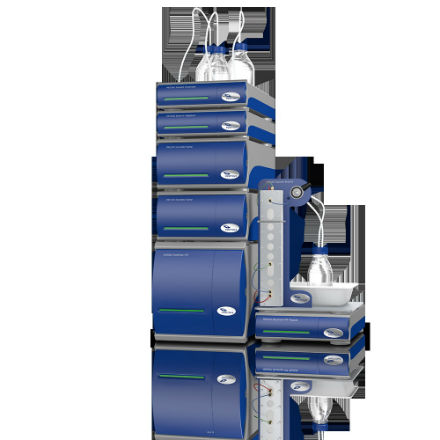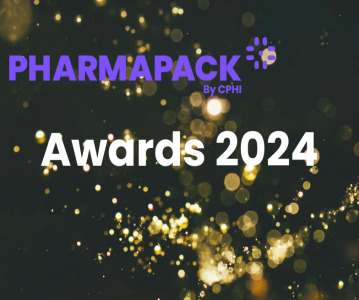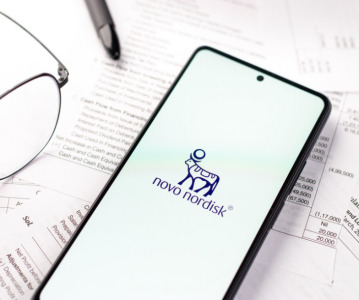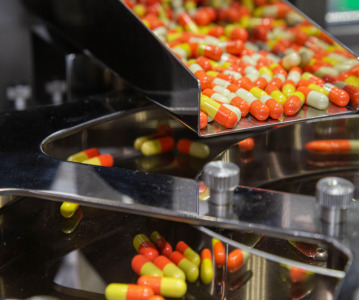A powerful new tool for the separation of charged species

Postnova's new EAF4 system.
A new analytical tool, Electrical Asymmetrical Flow Field-Flow Fractionation (EAF4) is showing much promise in biopharmaceutical and nanoparticle applications.
Traditional separation technology in these fields provides particle size or molar mass distributions as the final result. It is clear, however, that particle and molecular charge plays a primary role in many applications such as protein aggregation, polymer flocculation, particle agglomeration and in pharmaceutical formulations in general.
The new Postnova EAF2000 instrument using EAF4 technology opens a completely new way to a significantly better understanding of these phenomena by allowing the particle size or molar mass distributions to be further differentiated and transformed into charge distributions. This allows identifying charge heterogeneities, which may be present within the different size and molar mass fractions and will quickly help to aid research or establish more efficient product development processes.
The EAF2000 instrument works by combining the principle of electrical and flow field-flow fractionation (FFF) in one experiment. In flow FFF the molecules and particles are gently separated in an open channel which avoids any interaction with column packing material keeping aggregation and structures intact. The electrical field, either positive or negative, can now be applied during this separation to differentiate between differently charged species of the same size or molecular weight.
The new Postnova EAF2000 technology is also designed in such a way that it allows the determination of the electrophoretic mobility (or zeta-potential) of the separated analytes under investigation. This is a key new tool, particularly for protein research as existing techniques for zeta-potential are limited by concentration and are simple batch techniques giving just an average value for all components in the solution. The new EAF2000 can determine the zeta-potential of each individually separated component such as protein monomer and dimer (or higher aggregates) or antibody monomer and fragments/aggregates.
Early successes with the technology have been found in applications as diverse as the separation of a positively charged pharmaceutical protein formulation, determination of the difference in zeta-potential of protein monomer and dimer and the differentiation of charge on polymer latex particles.
There is the first chance to see this technology in action on 6 March at the 2nd Postnova FFF Seminar at the company's UK headquarters in Malvern (UK). Following the popularity of the first Postnova first seminar, an informative program of talks from eminent guest speakers, plus presentations from Postnova scientists has been assembled.
The free 2018 seminar has been designed to advance the attendees knowledge of applications and techniques in nanoscale characterisation. The seminar will be particularly useful to those interested in using FFF, Size Exclusion Chromatography (SEC/GPC) and Light Scattering/Viscometry (MALS/DLS), as well as those interested in how these techniques may be useful in their research.
With limited attendee spaces available please register now for this free Seminar by contacting Postnova Analytics at [email protected].
Related News
-
News Pharmapack Awards 2024 Patient-Centric Design Award Winner – Dr Ferrer BioPharma
The 2024 Pharmapack Awards celebrated the best in innovation and design for the pharmaceutical packaging and drug delivery industry on January 24, 2024. -
News Women in Pharma: Minding the Gap at Pharmapack 2024
2024 marks the first year Pharmapack will host a Diversity track dedicated to bridging the gap within the pharmaceutical packaging and drug delivery sector. The track includes a panel discussion on 'Enabling Diversity in the Workplace,' focused... -
News Pharmapack Awards 2024 - Celebrating Packaging and Drug Delivery Innovation
The 2024 Pharmapack Innovation Awards ceremony celebrated the best in pharmaceutical packaging and drug delivery innovation at all levels. The awards were held on January 24, 2024 at the Paris Expo Porte de Versailles. -
News 2024 Pharma Industry Trends Outlook: Collaboration, Market Maturity, and Digital Futures
The annual CPHI Online 2024 Pharma Trends Outlook, in partnership with Arvato Systems, identifies 12 key industry trends shaping the life sciences industry in the coming year. -
News New Novo Nordisk AI hub for drug discovery to open in London, UK
Danish pharmaceutical giant Novo Nordisk will be opening an AI-based research facility in the heart of London to advance drug discovery operations. -
News BioNTech to begin mRNA vaccine manufacturing in Rwanda by 2025
German biotechnology company BioNTech has stated their intentions to begin production at their mRNA vaccine factory in Rwanda by 2025, which will mark the first foreign mRNA vaccine manufacturing site on the continent of Africa. -
News Women in Pharma: Looking back on 2023 and moving forward to 2024
In this monthly series, we interview women from across the pharmaceutical industry and supply chain to discuss the importance of gender diversity in healthcare, the workplace, and beyond. -
News CPHI Barcelona 2023: Partnering for Success – Managing Outsourcing Relationships to Optimise Manufacturing Operations
During CPHI Barcelona 2023, insightful content sessions offered attendees the chance to explore trending topics with expert speakers and panellists. Here, we summarise what the pharma industry and supply chain are talking about the most.
Position your company at the heart of the global Pharma industry with a CPHI Online membership
-
Your products and solutions visible to thousands of visitors within the largest Pharma marketplace
-
Generate high-quality, engaged leads for your business, all year round
-
Promote your business as the industry’s thought-leader by hosting your reports, brochures and videos within your profile
-
Your company’s profile boosted at all participating CPHI events
-
An easy-to-use platform with a detailed dashboard showing your leads and performance







